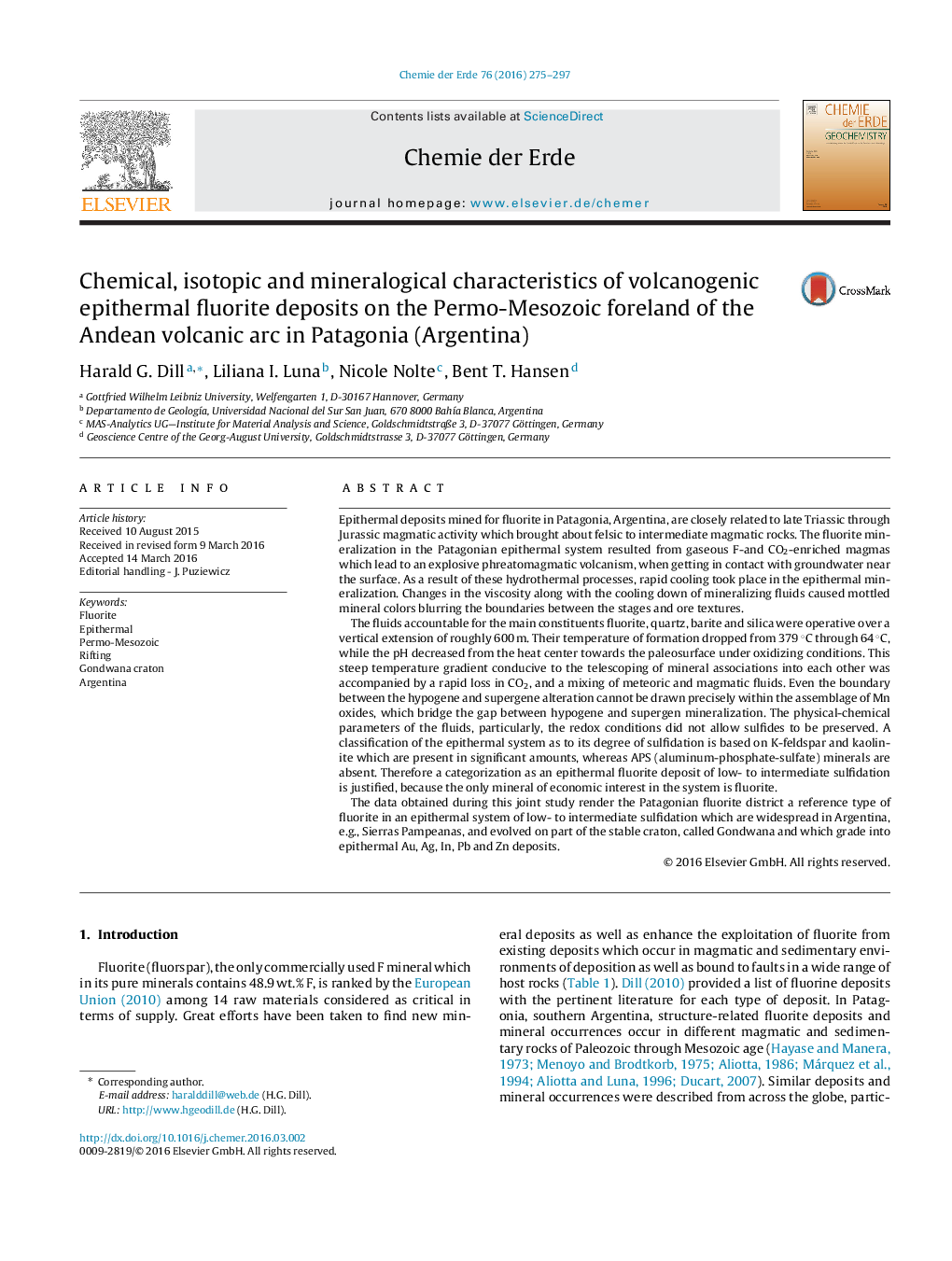| کد مقاله | کد نشریه | سال انتشار | مقاله انگلیسی | نسخه تمام متن |
|---|---|---|---|---|
| 4406784 | 1307319 | 2016 | 23 صفحه PDF | دانلود رایگان |
Epithermal deposits mined for fluorite in Patagonia, Argentina, are closely related to late Triassic through Jurassic magmatic activity which brought about felsic to intermediate magmatic rocks. The fluorite mineralization in the Patagonian epithermal system resulted from gaseous F-and CO2-enriched magmas which lead to an explosive phreatomagmatic volcanism, when getting in contact with groundwater near the surface. As a result of these hydrothermal processes, rapid cooling took place in the epithermal mineralization. Changes in the viscosity along with the cooling down of mineralizing fluids caused mottled mineral colors blurring the boundaries between the stages and ore textures.The fluids accountable for the main constituents fluorite, quartz, barite and silica were operative over a vertical extension of roughly 600 m. Their temperature of formation dropped from 379 °C through 64 °C, while the pH decreased from the heat center towards the paleosurface under oxidizing conditions. This steep temperature gradient conducive to the telescoping of mineral associations into each other was accompanied by a rapid loss in CO2, and a mixing of meteoric and magmatic fluids. Even the boundary between the hypogene and supergene alteration cannot be drawn precisely within the assemblage of Mn oxides, which bridge the gap between hypogene and supergen mineralization. The physical-chemical parameters of the fluids, particularly, the redox conditions did not allow sulfides to be preserved. A classification of the epithermal system as to its degree of sulfidation is based on K-feldspar and kaolinite which are present in significant amounts, whereas APS (aluminum-phosphate-sulfate) minerals are absent. Therefore a categorization as an epithermal fluorite deposit of low- to intermediate sulfidation is justified, because the only mineral of economic interest in the system is fluorite.The data obtained during this joint study render the Patagonian fluorite district a reference type of fluorite in an epithermal system of low- to intermediate sulfidation which are widespread in Argentina, e.g., Sierras Pampeanas, and evolved on part of the stable craton, called Gondwana and which grade into epithermal Au, Ag, In, Pb and Zn deposits.
Journal: Chemie der Erde - Geochemistry - Volume 76, Issue 2, June 2016, Pages 275–297
